Sizes of the Tibetan Mastiff by month: weight and height
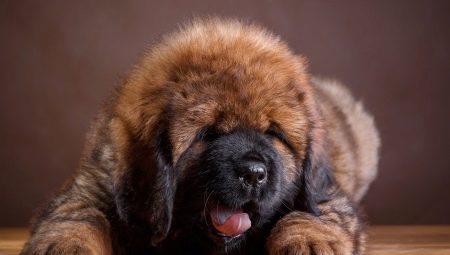
The Tibetan Mastiff, also called the Tibetan Mastiff, is an amazing and very unusual dog. Tall stature, strong bones, thick coat and sullen gaze give the animal a formidable and unapproachable look. The breed was bred in Tibet to guard the homes of local residents and livestock, and to this day "Tibetans" are happy to serve people as bodyguards and companions. However, this dog is not suitable for everyone, primarily because of its strength and size.
To what size can a mastiff "grow"? What factors influence its growth and development? Read about this and much more in our article.
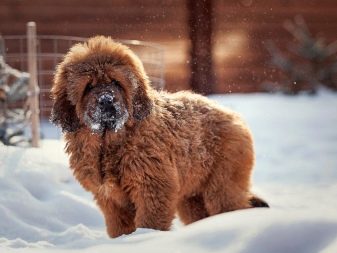
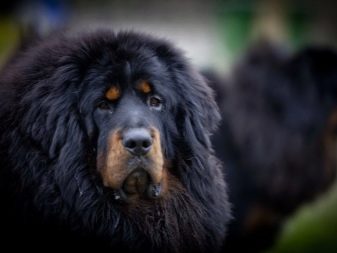
Description of the breed
To begin with, it is worth acquainting you a little with this interesting bear-like dog. "Tibetans" are by their very nature very independent. Like many other breeds, whose purpose was to graze and guard livestock, such dogs are able to make independent decisions depending on the situation. However, it cannot be said that mastiffs are disobedient dogs, but, they feel very much if a person is not confident in himself, and can quickly take a leadership position. That is why the puppy needs to instill a sense of respect for the head of the family and its members from childhood.
The guarding qualities of the "Tibetans" are at the highest level. Any stranger who appears in the dog's field of vision is immediately under close supervision. Because of this feature, only a physically strong person can walk with a "Tibetan", holding the dogs on a short leash, with the obligatory donning of a muzzle.
Loud sound, sharp gesture, fast movement - all this can provoke aggression of this large dog.That is why it is very important to instill in the "Tibetan" obedience and discipline from an early age.
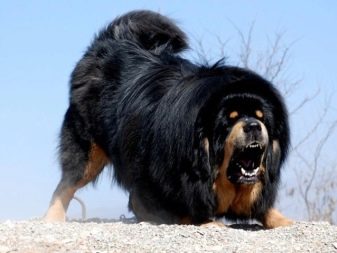
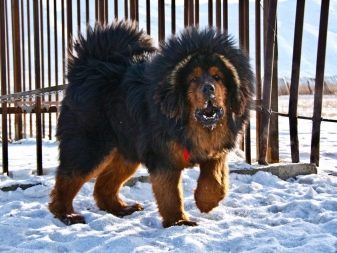
Now let's talk about the appearance of the Tibetan Mastiff. A distinctive feature of the breed is a thick coat with a chic mane. Other parameters:
- large wide head, muscular neck;
- scissor or straight bite, massive muzzle, large nose with a dark lobe;
- the body is large, powerful, muscular, the back is straight, the chest is wide;
- thick coat, guard hair is long, rough to the touch;
- set wide apart, dark brown eyes;
- the ears are in the shape of a triangle, small in size, drooping;
- bushy tail set high;
- powerful straight paws.
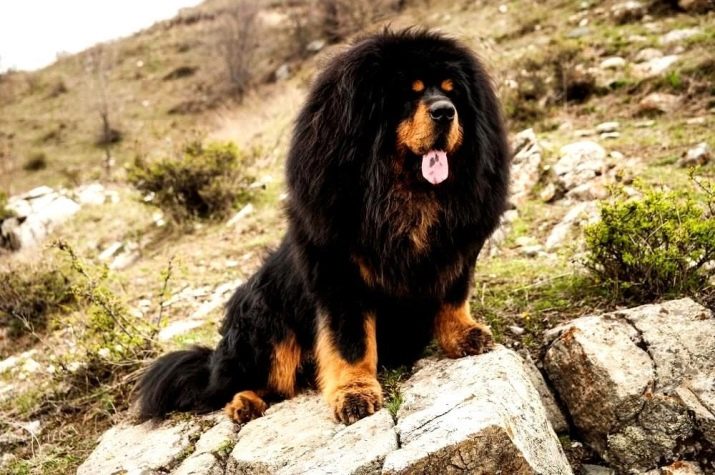
The standard colors of the breed are as follows.
- Black. Basic coat tone, small yellowish spots are acceptable.
- Tanned. The dog itself is black, but there are symmetrical reddish-brown spots - tan marks that have clear boundaries and are located in certain places.
- Ginger. This refers to a variety of shades: gold, red, sand.
In each of the above colors, the presence of a narrow white "shirt-front" on the breast is acceptable.
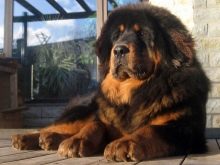
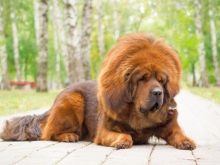
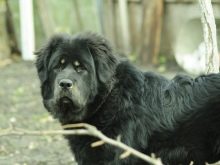
What influences development?
If you decide to purchase a Tibetan Mastiff puppy, you must clearly understand that such a dog can live only in a country house. In an apartment, even in the most spacious, the "Tibetan" will feel uncomfortable. Walking an animal in an urban environment will also be difficult due to the huge number of "irritants": car horns, stray animals, children's screams, cyclists, etc.
As a rule, dogs such as the Tibetan Mastiff are not bought spontaneously, but are carefully planned for such an acquisition, in pursuit of a specific goal: protection of a house or other object, cattle grazing. Therefore, the future owner wants to acquire the most promising puppy from the litter.
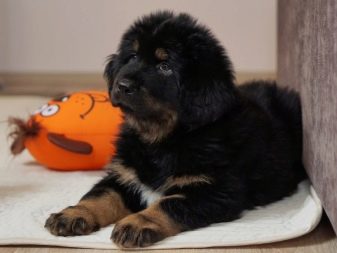

Let's take a look at the factors that influence the growth and development of the little "Tibetan".
- First of all, it is, of course, genetics. Even with observance of all the rules of feeding, regular veterinary examinations, performing the necessary physical exercises - if the genes "pumped up", you will not grow a large dog. That is why it is very important to purchase a puppy only from trusted breeders with a preliminary study of the pedigree of the future pet.
- The second most important is the amount of mother's milk received by the puppy in the first days of life. If the baby is malnourished from birth, he will be weaker than his brothers and sisters, respectively, and smaller.
- The third component logically follows - the quality of nutrition of the mother-bitch. If in the process of bearing offspring she received vitamin and mineral supplements in sufficient quantities, lived in a warm place, walked a lot, then we can say with almost one hundred percent certainty that she will give birth to puppies with excellent initial data. If, on the contrary, the conditions of her maintenance left much to be desired, then the offspring of such a mother will be weak, with possible developmental pathologies. Saving on a brood bitch both during pregnancy and after giving birth is a very bad idea.
- Nutrition of the puppy after the suckling period. When babies are weaned from their mother and the first complementary foods are introduced, it is very important to formulate the correct diet. There are 2 ways: feeding "natural" or ready-made feed. If you choose the first way, be prepared for the fact that the puppy will need animal protein (chicken, turkey, beef, eggs, cottage cheese), carbohydrates (buckwheat, rice, vegetables), fats (vegetable oil). When choosing ready-to-feed feed, choose super premium feed with the giant label.
- Physical activity. A "Tibetan" is a dog that needs sports and training. A mastiff should walk for at least 2-3 hours a day, while it is desirable that he not only follow the owner, but run freely, follow commands, and overcome obstacles. If you have your own yard - great, if not - you will have to take your pet to a special area or out of town.
- Diseases. They are both congenital and acquired. And if nothing can be done with inherited malformations (it is better to refuse to buy such a puppy), then acquired diseases at the first signs of appearance can and should be treated. Show the animal to the veterinarian, follow all his instructions, and you can raise a large and healthy animal.

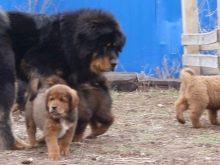
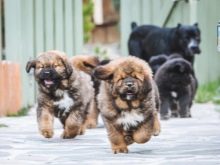
How old do they grow up?
The development of the "Tibetans" is rather slow. Girls grow up to 3 years old, boys - up to 4 years old. At the same time, their puberty also "inhibits": the first mating is permissible not earlier than the bitch reaches 2 years of age, while in males, individual characteristics (height, weight, etc.) are taken into account. Tibetan Mastiffs have a heat only once a year, most often in winter.
A pair for mating must be selected very competently, because the future characteristics of the offspring and the prospect of puppies as show specimens depend on the transferred set of genes.
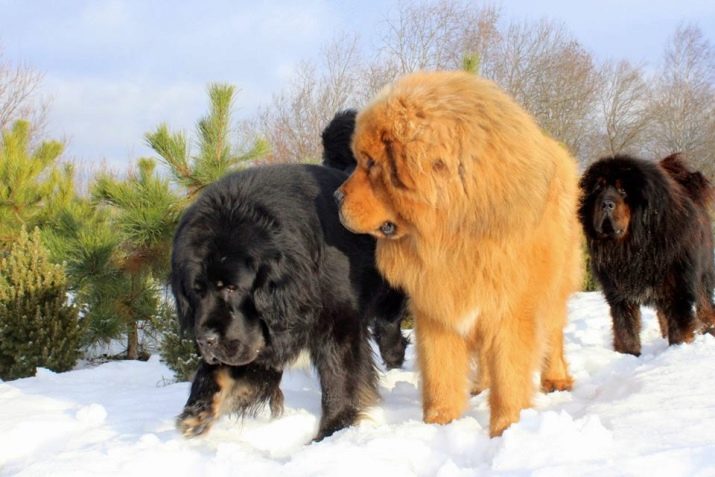
Average parameters depending on gender
"Tibetans" are rightfully considered giants among dogs, although there are breeds and larger. According to the characteristics of the breed, their average dimensions are as follows:
- the average weight of an adult male is about 70 kg, bitches - up to 65 kg;
- average height (at the withers): male - 68-71 cm, knot - 58-62 cm.
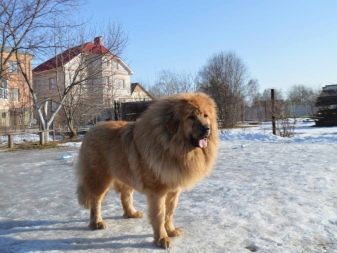
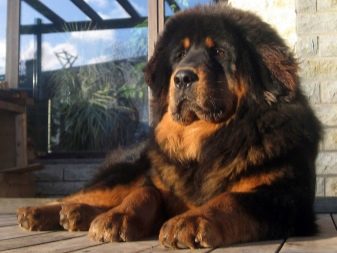
Height and weight of adult dogs
The description of the Tibetan Mastiff says that he is ranked sixth in the ranking of the tallest dogs in the world. On the Internet "walks" a photo where a person can hardly hold a furiously torn dog with dimensions that are not inferior to a brown bear. This is, of course, a fake. The maximum recorded height achieved by a representative of this breed is 80 cm, and the weight can reach 85-90 kg.
The absolute record holder for today is the dog Hong Dong, who has reached a weight of 155 kg.
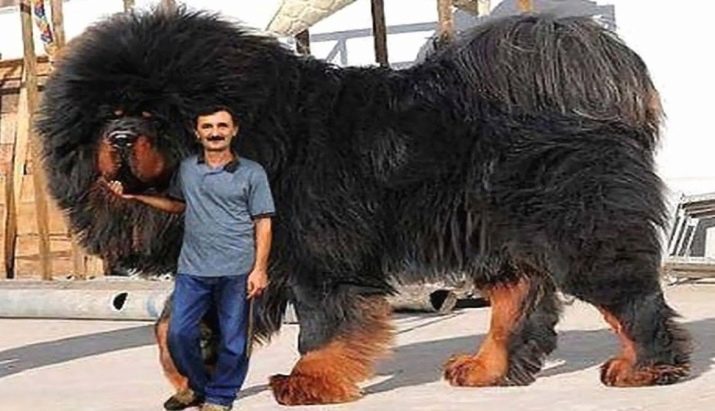
Puppy sizes by month
So, it's time to find out what are the sizes of the Tibetan Mastiffs, depending on their age. "Tibetans" are born with a weight of 400-600 grams, which depends on the number of babies in the litter, as well as on the genetics of the parents. Further, weekly, puppies gain 50-150 grams per day, the quality of milk, the initial data of the baby, and living conditions affect the weight gain. Not necessarily the largest puppy from birth will remain that way as it matures.
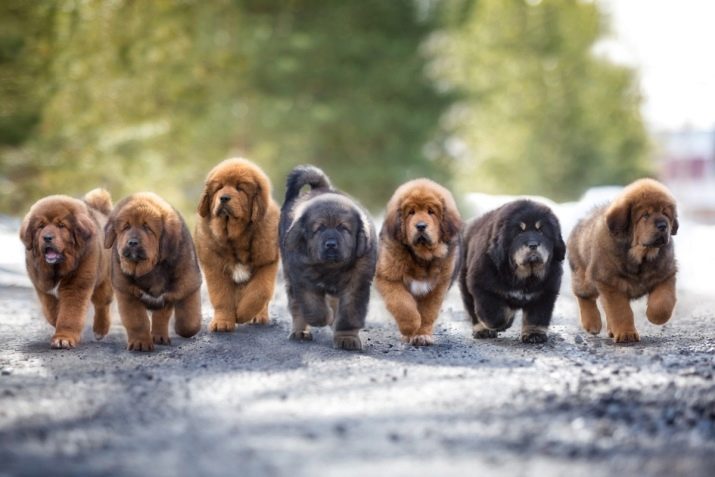
Below is a table of the weight of Tibetan Mastiff puppies, depending on age.
Age | Body weight, kg | Height at the withers, cm |
Newborn | 0.4 to 0.6 | About 10 |
1 month | 3-5 | 24-28 |
2 months | 9-11 | 30-33 |
3 months | 15-19 | 40-50 |
4 months | 17-30 | 43-50 |
5 months | 24-40 | 50-60 |
6 months | 28-42 | 55-65 |
7 months | 31-50 | 60-68 |
9 months | 45-55 | 62-70 |
1 year | 50-56 | 65-70 |
By the age of 1.5-2 years, the "Tibetan" practically reaches its final parameters, however, development still continues: there is a set of muscle mass, bone growth, and by the age of two, puberty ends.
For fun facts about dogs, see below.



































